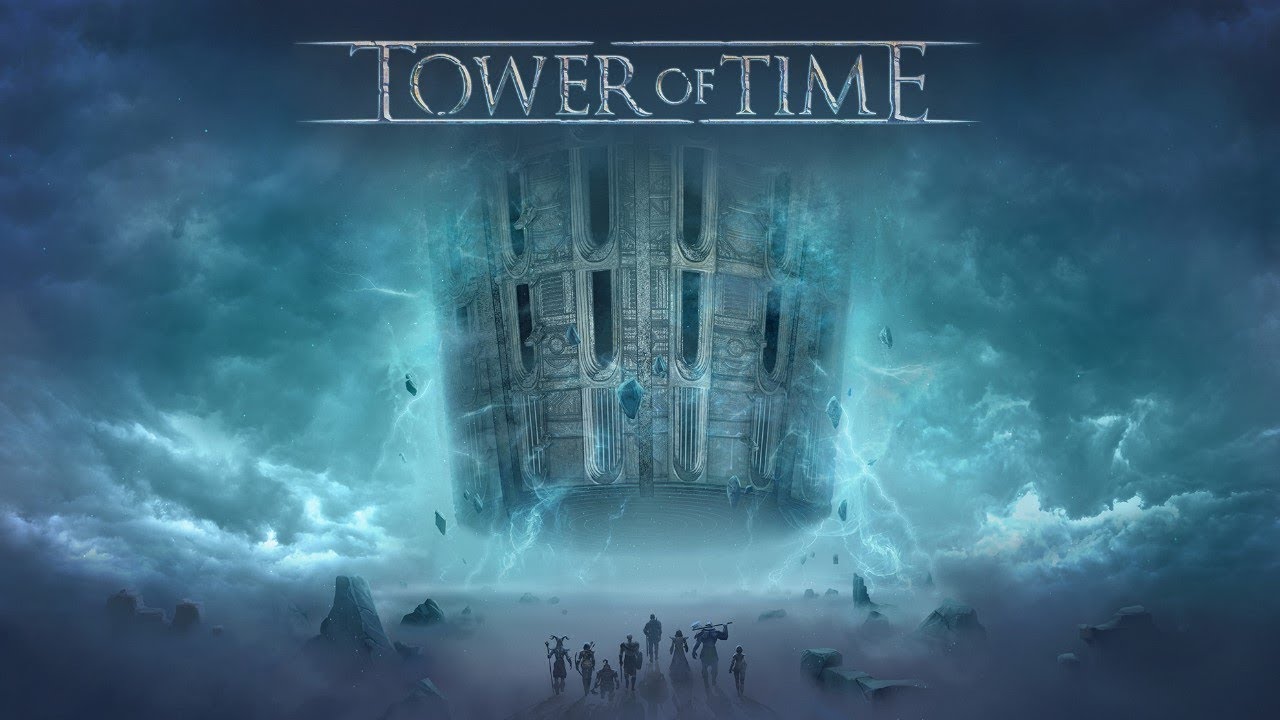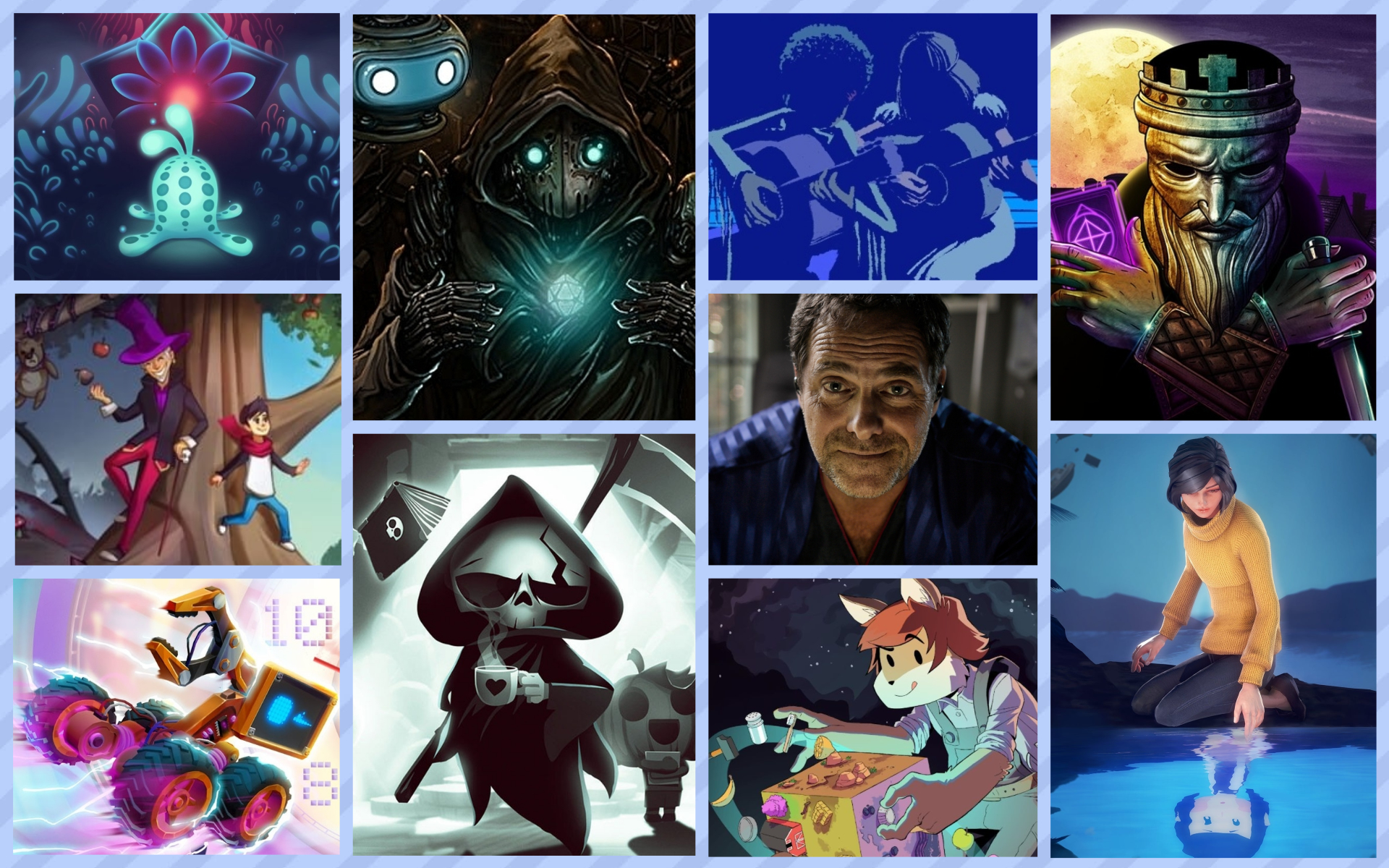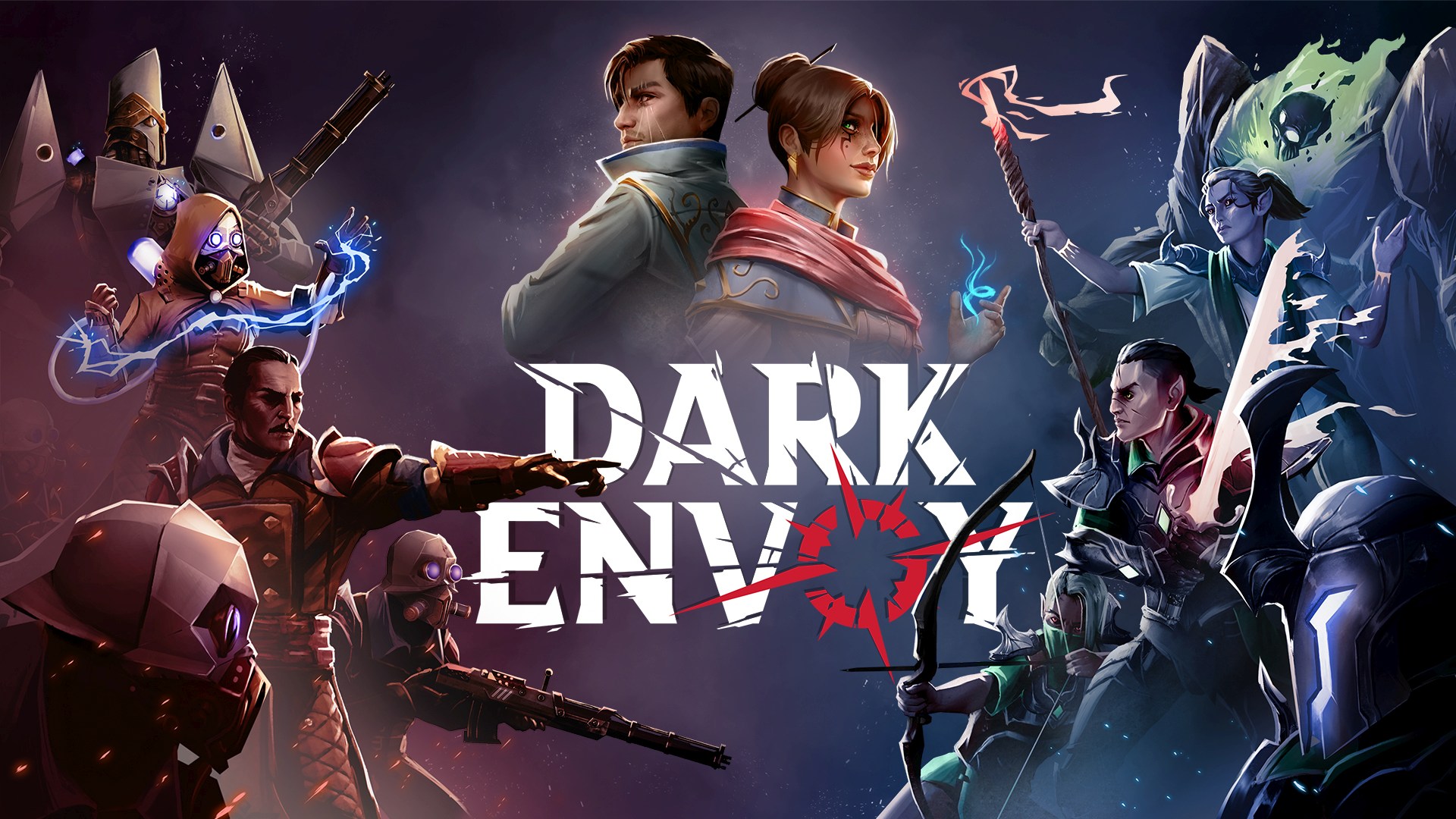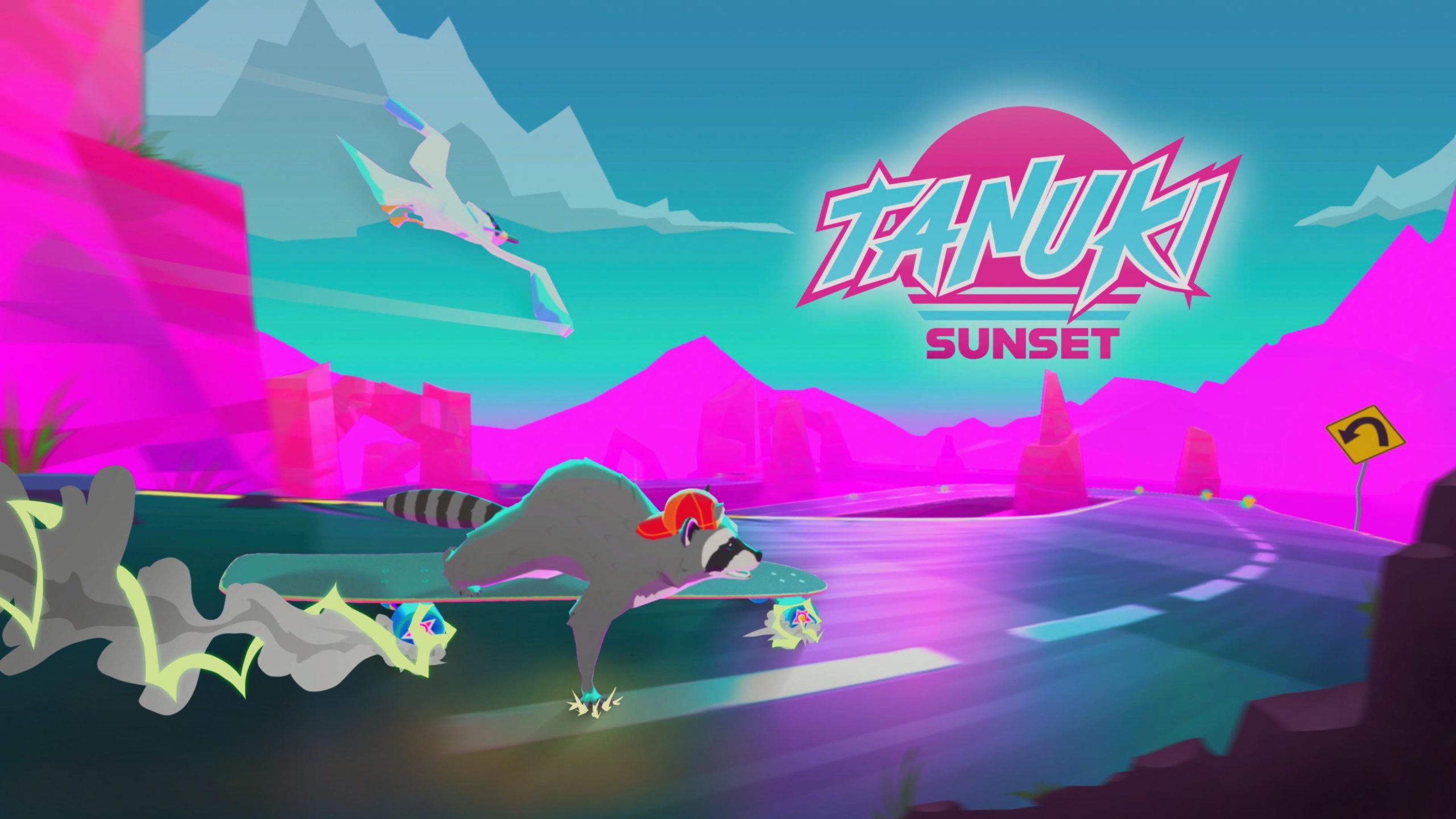Tower of Time (PS4) Review – An RPG With Highs and Slows
I think it’s fair to say that despite employing all the usual tropes of the RPG genre, Tower of Time has an unusual narrative structure. The game begins by introducing your player character as a young boy who’s living in a fantasy world that’s slowly dying around him. Exploring a weird ruin he found sticking out of the ground, he stumbles across a mysterious throne that talks to him. It explains that this boy has immense power but he’s not ready to use it yet. With a flash of light, the power of the throne infests your character and he’s then sent on his way. His interaction with the throne haunts him throughout his life, showing him symbols and empowering him to be an excellent fighter. This in turn earns him the rank of Commander in the army of Artara. Convinced it contains a way to save the kingdom of men, the player character persuades the king that he should take a small group of warriors back to the ruins, which is actually a tall tower which is upside down and directs deep in the ground, to investigate. So far, so usual.

Here’s where things get odd – Despite Tower of Time spending the first 15 to 20 minutes of its run time getting you interested in this player character, when he returns to the throne and sits down, he becomes a non-combatant. The throne gives him the power to connect to and influence the thoughts and decisions of his party of “Champions” but the character you’ve spent the most time with up to this point is almost immediately side-lined. This is confusing for the longest time and while it eventually makes some sense, it’s quite a bizarre design choice to bait and switch the story like it does.
The player character charges his party to reach the top/bottom of this tower/dungeon and away they go. Initially, your party is made of just 2 humans – Kane, or K to his friends, who’s a chunky tank swordsman and Maeve, an archer. Viewed via a fixed not-quite-top-down camera angle that follows the party leader (the rest of the group tag along wherever you move the lead) your team starts to explore the winding depths/heights in the tower. As the group descends/ascends the Tower of Time, they start to unearth a lost history of Artara, the mystery surrounding the tower and why they’re there in the first place. The pool of Champions at your disposal grows as new characters arrive in some rather blunt ways. After a layer of the story is divulged, you’re often treated to a new member. A druid, a dwarven rune lord, a masked Mystic and more can be won over during your adventure but sometimes they simply arrive at the tower and tell the player character that they want to throw in with you. That’s sometimes as much description as you’re given for their timely and random arrival. At any one time, you can take 4 Champions down/up into the Tower of Time but you’ll eventually recruit more than that number, asking the player to make choices on who to proceed with.

The story in Tower of Time goes to some very unexpected places. While much of the game is steeped in mundane fantasy tropes you’ll have seen countless times before, there’s some moments in this game that are…anything but that. The big story beats are played out via cutscenes that combine gorgeous painted artwork, a cool fluid effect that transitions between each still and a grizzled voice over delivering the detail. These segments lead into one another, despite their being hours of game play between each one which can be a tad confusing. The space between these cutscenes are filled with exploration, puzzle solving, text conversations between the Champions, exposition heavy descriptions of the environment as if the game is trying to be scene setting D&D Dungeon Master (do we really need a text box on screen to say “The party see’s nothing but darkness as they pass over the bridge” when the hero’s walk over a bridge that’s crossing nothing but black?) and combat.

The combat in Tower of Time is by far the most unique aspect of the game. When you meet the enemies, beasts and other inhabitants of the tower, you’re transported to an arena where the real time strategy action will take place. There’s not a vast variety of these arena’s so you’ll see each one a number of times throughout the game but you won’t be fighting the same make up of enemy groups so it doesn’t get too repetitive. Each fight begins with your chosen party of heroes, each with their own abilities and stats, in a circle. When you press “Options” on the PS4 controller, the fight begins and time flows normally. Each character can be directed to a location or an enemy by moving an on-screen cursor and clicking on them. To give you time to make sure everyone’s doing what they should, you can freeze and slow time so you get time to organise your team and when you unfreeze, they’ll go about doing your bidding as your direct.

The objective during each fight will determine how you’ll need to go about strategizing. Most fights will start and enemies will pour in from entry points from around the arena with the aim to simply slay them all. Some will have portals that will summon groups of enemies if they’re not defeated before their counter hits zero. Others ask you to protect Mana pools from the foes attacking through entries until the horde is defeated. Boss fights will end when either the boss or your heroes have ran out of health. Played on the standard difficulty (there are 5 settings from Story mode to brutally difficult) Tower of Terror will punish you if you don’t use all of its facets in combat. Each character has a number of powers which can change the tide of battle, damage the encroaching waves, slow them down or buff your team. Kane can build walls across the arena to funnel your enemies where you want them. Maeve can set bear traps to slow down anyone who steps on them. Aeric can summon an Ent like creature which will fight on its own accord. Using these powers strategically to prevent your Champions taking too much damage (you’ll only lose a fight if all 4 of your combatants fall and any health lost is restored between fights) while channeling the Orcs, monsters or whatever else through to your Tank characters, traps and damage dealing enemies. Played like a single player MMO RTS battle where you control the healer, the support, the tank or whatever other characters you choose, it’s challenging and a lot of fun.

The deeper/higher you get into the Tower of Time, the more difficult combat will become. The beasties you come against get faster, more numerous and with more devastating abilities. To counteract that you can increase the stats of your heroes, the usefulness of their gear and upgrade their abilities. Most of this is done through collectables – furnaces can upgrade gear, blueprints can upgrade facilities on the surface and collectable gold can be spent training your crew. There’s no traditional “experience” system in this game. Instead Tower of Time encourages you to seek out secrets and fight past tougher groups of enemies that are guarding chests and items that’ll boost your fighters.
Performing all these upgrades and improvements to your character and their equipment can be quite a chore because the transition from PC to PS4 has been a little rough on the user experience for Tower of Time. The menus are very obviously designed around having a mouse pointer available and having the left stick move through boxes one by one across the screen is cumbersome to say the least. It’s even more confusing when updating and choosing abilities as the right stick moves through the powers while the left stick moves through the upgrades within those powers. Personally, I think adopting the cursor from the combat sections – which itself isn’t the most intuitive – would have given a more user friendly experience. I’ll be honest, towards the end of the game I dropped the game difficulty down to “Story mode” simply because I found using this menu system so irritating and I knew I could coast to the end with what I had equipped.
I reached that ending after 45 hours of play and there was certainly corners of the Tower of Time I hadn’t explored – before you descend to the next of the 10 floors in the game, you’re shown how much of the activity on that level you’ve accessed from chests left unopened to fights not had. Tower of Time is a lot of game in one package and, personally, I think it overstays its welcome at times. While some floors in the game are exciting and do a lot for the narrative, others feel like filler. The third floor felt like a real slog because it felt vast and was designed to have you going around in circles looking for switches that open gates. There’s often backtracking involved in a singular level and while there’s fast travel points dotted around the map, the cumbersome controller support sometimes made it quicker to just re-tread your steps than to fast-travel.

Visually, Tower of Time isn’t going to be winning any beauty contests but it can be quite eye catching at times. All of the typical fantasy environments are included here and they’re detailed enough to sell a feeling of progress and difference to the player. It’s during combat, when you’ve got spells going off, fire blasting from the floor, arrows through the air and a flaming sword splitting an Orc that the game looks its best. Despite there being a lot going on on the screen, there’s no performance dips or issues.
A fantasy cRPG romp through an upside down tower full of mysteries, in Tower of Time you’ll meet new characters, recruit some of them and fight the rest. The narrative, while eventually realised, takes some odd turns and because the overarching plot spans 40+ hours and is drip fed to you at regular intervals, the pacing can feel slow and disjointed. The transition from PC to PS4 has not been kind on the menu systems either. It’s during combat – a blend of RTS with time stopping/slowing mechanics – that Tower of Time is most unique, really pushing the player to understand the beasts they’re fighting and how best to strategize against them. If you liked the Baldur’s Gate or Neverwinter Nights games from the 90’s and have been hankering for something similar and traditional yet modernised, Tower of Time delivers just that. You will need to have some patience with its slower segments to see it through to the top/bottom.
6/10
Tower of Time is available now on PS4 (reviewed on base console), Xbox One, PC and Nintendo Switch.
Developer: Event Horizon
Publisher: Digerati
Disclaimer: In order to complete this review, we were provided with a promotional copy of the game. For our full review policy, please go here.
Make sure to follow Finger Guns on our social channels –Twitter, Facebook, Twitch, Spotify or Apple Podcasts – to keep up to date on our news, reviews and features.



